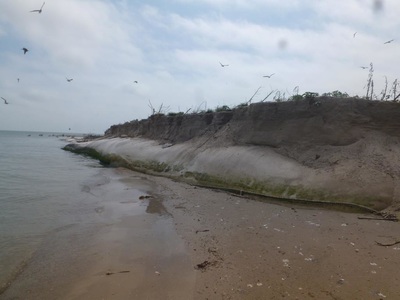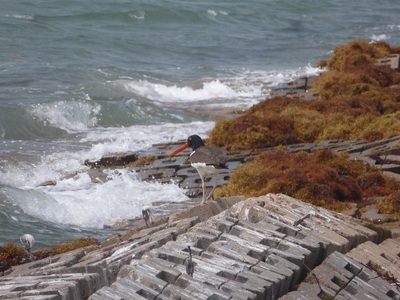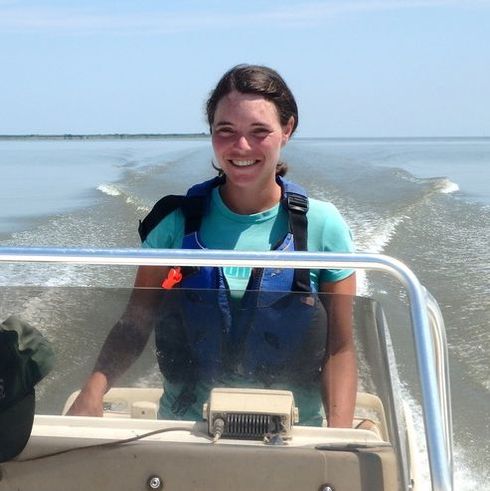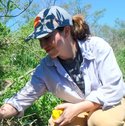Our second capture site in Texas, Chester Island, lies off the coast of Port O'Connor in Matagorda Bay. Before beginning our work, we visited the colony with Tim and Peggy Wilkinson. Peggy's father, Chester Smith, served as island warden for 25 years until his death in 2011; Tim has now taken over warden duties.
A monument to Chester Smith, who helped restore one of Texas's largest pelican colonies following its DDT-related decline
A monument to Chester Smith, who helped restore one of Texas's largest pelican colonies following its DDT-related decline
| Upon arriving, we discovered that the raised walkway connecting the boat dock to the island was precariously close to falling. The sand had literally eroded out from underneath it. | |
| | While Tim, Stève, and Yvan did the heavy carpentry, Elizabeth and I took a walk around the island to map its perimeter. Chester contains almost every erosion control measure you can imagine. One one side of the island are geotubes: heavy-duty tubes of woven plastic that can be filled with dredged sand to create an artificial barrier. On the other, linked concrete erosion matting that held the shoreline in place for many years is slowly disappearing into the ocean. |
Tim is in the process of applying for grants to put new erosion control measures in place. Even in the two years since the island was last measured its area has shrunken considerably, and we saw evidence of recent land loss all around the island.
Maintaining nesting islands is no easy task. Coastal real estate is in short supply, making the few islands that can be protected from human access all the more valuable. Low, sandy islands, like those along the shores of the Gulf of Mexico, are rapidly losing area due to erosion compounded by boat and human traffic, severe storms, and sea level rise. Areas where birds nest quickly become overgrown with native and invasive vegetation (the topic of my Master's thesis, and as much a problem in the Gulf of Mexico as it is on both sides of the Atlantic). For nearshore islands, predation by coyotes and raccoons who arrive from the mainland is a constant threat.
For us, the construction on Chester Island was a fun break from our routine. For wardens like Tim, it's only a small part of a constant struggle. For the birds, it may eventually represent the difference between extinction and survival.
Maintaining nesting islands is no easy task. Coastal real estate is in short supply, making the few islands that can be protected from human access all the more valuable. Low, sandy islands, like those along the shores of the Gulf of Mexico, are rapidly losing area due to erosion compounded by boat and human traffic, severe storms, and sea level rise. Areas where birds nest quickly become overgrown with native and invasive vegetation (the topic of my Master's thesis, and as much a problem in the Gulf of Mexico as it is on both sides of the Atlantic). For nearshore islands, predation by coyotes and raccoons who arrive from the mainland is a constant threat.
For us, the construction on Chester Island was a fun break from our routine. For wardens like Tim, it's only a small part of a constant struggle. For the birds, it may eventually represent the difference between extinction and survival.







 RSS Feed
RSS Feed
